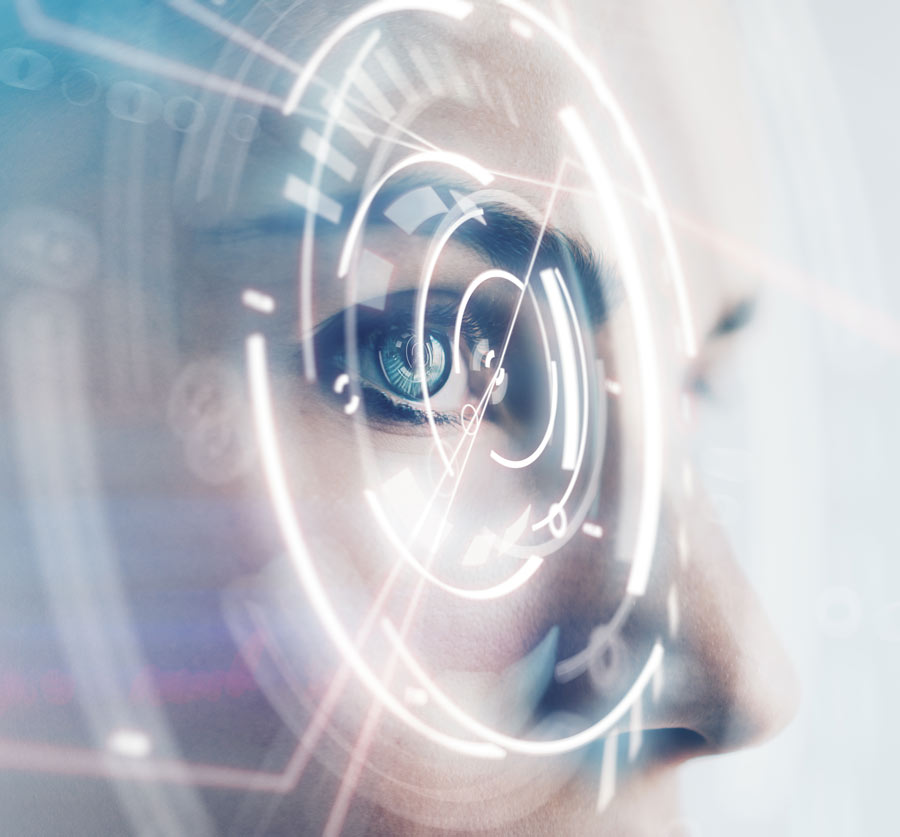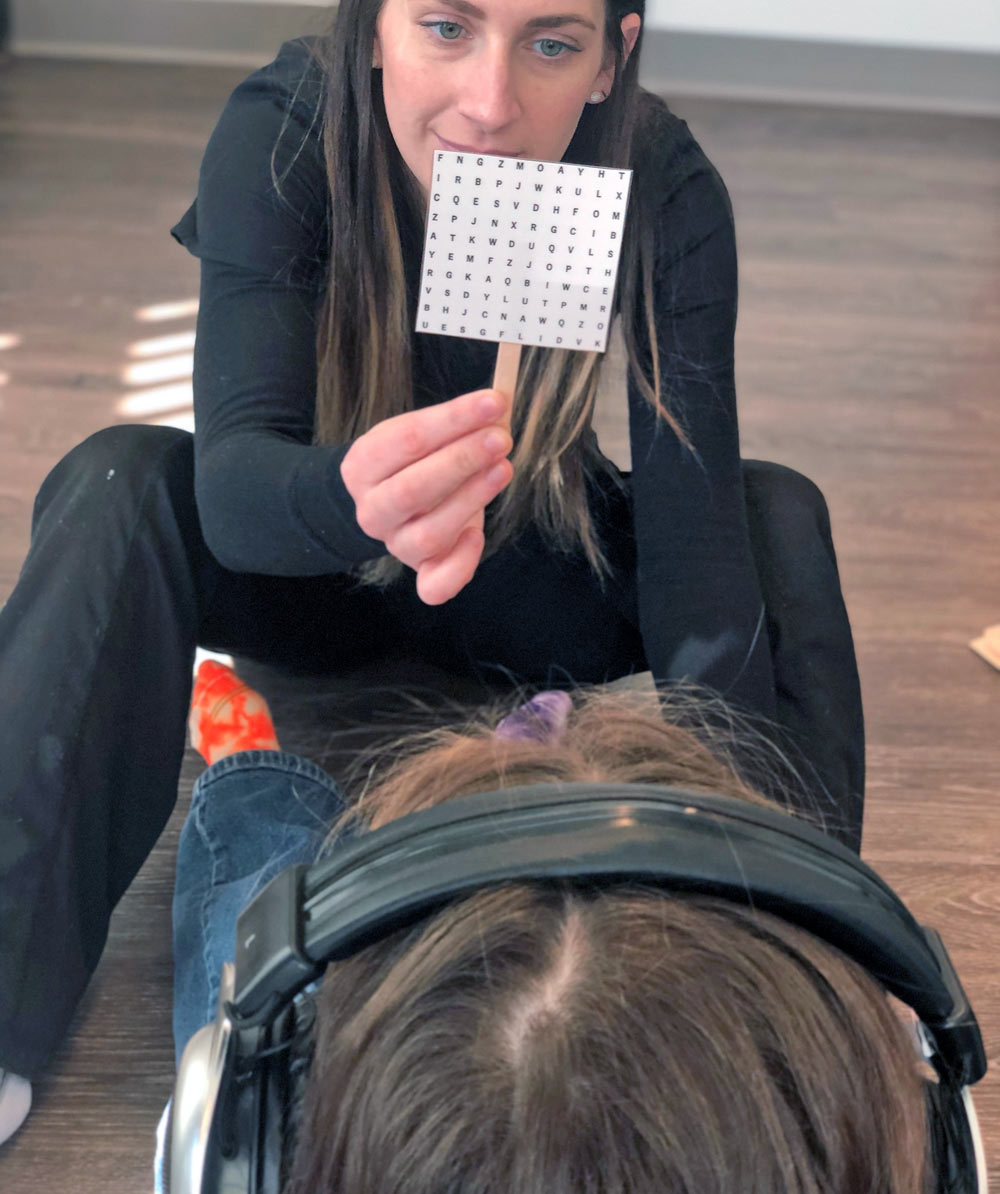Farmington, CT
Additional Treatment Modalities

Farmington, CT
Additional Treatment Modalities
Our credentialed, trained, and certified specialists work to restore and optimize visual function, sensory integration, and wellness. In addition to our optometrists and occupational therapists, our staff includes whole-body therapeutic practitioners who direct patients in healthful complementary therapies that support healing, including:
Integrated listening systems (ILS)
Based on the model of neuroplasticity, ILS is a multisensory intervention that integrates the visual, vestibular, and auditory systems. Structurally, these three systems are wired together and fire together.
In ILS, a patient receives changes in auditory input while doing visually directed tasks to help develop new neuro-pathways. In addition, a bone conductor on the headset stimulates the vestibular (movement) and proprioceptive (where is my body space) systems. It can be customized to each patient’s specific challenges:
- Focus/attention
- Coordination
- Auditory processing
- Organization
- Reading proficiency
- Communication
Integrative manual therapy (IMT)
IMT corrects the structural integrity of the body using gentle non-invasive techniques. Our IMT practitioners use specific techniques to restore the vitality and function of the circulatory, lymphatic, nervous, and other systems to support visual and sensory function during everyday activities.
Safe and Sound by ILS
The Safe and Sound program by ILS utilizes an auditory stimulus to support a parasympathetic (calming) balance in the autonomic nervous system. The Safe and Sound program exercises the auditory neural pathways associated with regulating behavioral state and social engagement needed for daily function.
Syntonics (prescription colored light therapy)
Syntonics uses prescription colored light therapy to rebalance the sympathetic and parasympathetic autonomic nervous systems. Our eyes function differently when the body is locked in sympathetic (fight or flight) or parasympathetic (rest and digest) mode. Changes to the autonomic nervous system change how the visual system functions. Syntonics opens up functional visual fields, integrating central and peripheral fields, improving visual processing, and reducing symptoms of dizziness, imbalance, and compromised visual function.
Additional rehabilitation methods
We also offer vestibular therapy, metronome therapy, astronaut therapy, and movement therapy.
To ensure collaborative care, our integrated team of professionals is happy to consult with providers outside our office.
Learn more about our occupational therapy and vision therapy.
Therapy FAQs
Below are answers to some of the most common questions about our services. If you have a question that isn’t answered, we’d love to hear from you. Please call us at (860) 231.8491 so that a member of our staff can provide a personalized response.
Is Integrated Listening Systems (ILS) done in office or at home?
ILS can be utilized as a standalone treatment or a supportive modality used in vision therapy or occupational therapy.
As a standalone treatment, ILS can be done at home with a minimum of either 3 one-hour sessions or 6 30-minute sessions per week, with 2 in-office support sessions per month.
As a supportive modality, ILS may be used in vision therapy or occupational therapy as both a loading activity, increasing sensory input from the auditory and vestibular systems, and as an integrated treatment modality.
How do you determine if I am a good candidate for ILS?
Our providers will determine if you would benefit from ILS after reviewing the results of your vision therapy or occupational therapy assessment.
Is Safe and Sound done in office or at home?
Our Safe and Sound treatment is done in-office with one-hour treatment sessions over a period of 5 consecutive days.
How do you determine if I am a good candidate for Syntonics?
Our providers will determine if you would benefit from Syntonics after reviewing the results of your vision therapy assessment. We will evaluate your history, visual function, and functional visual field to determine your treatment plan.
What is a functional visual field?
A functional visual field looks at how much visual information the brain is processing at one time. It is also used as a way to assess sympathetic/parasympathetic balance.
How do I acquire a light unit for Syntonics treatment?
Once our providers determine that you are a good candidate for Syntonics, you will be able to rent a light unit from our office, by the month.
Is Syntonics done in office or at home and what does the treatment look like?
Syntonics is typically done at home in a dark room where your retina can absorb prescribed wavelengths of visible light. The recommended treatment protocol is to build up to 20-minute sessions in a repeated pattern of 3 days on and 1 day off, or modified to 5 days on and 2 days off.
How does Integrative Manual Therapy (IMT) differ from cranial sacral or massage therapy?
We measure response to treatment with a functional visual field. It is important that patients repeat functional visual field testing every 2 weeks so that we can measure changes and modify treatments.

